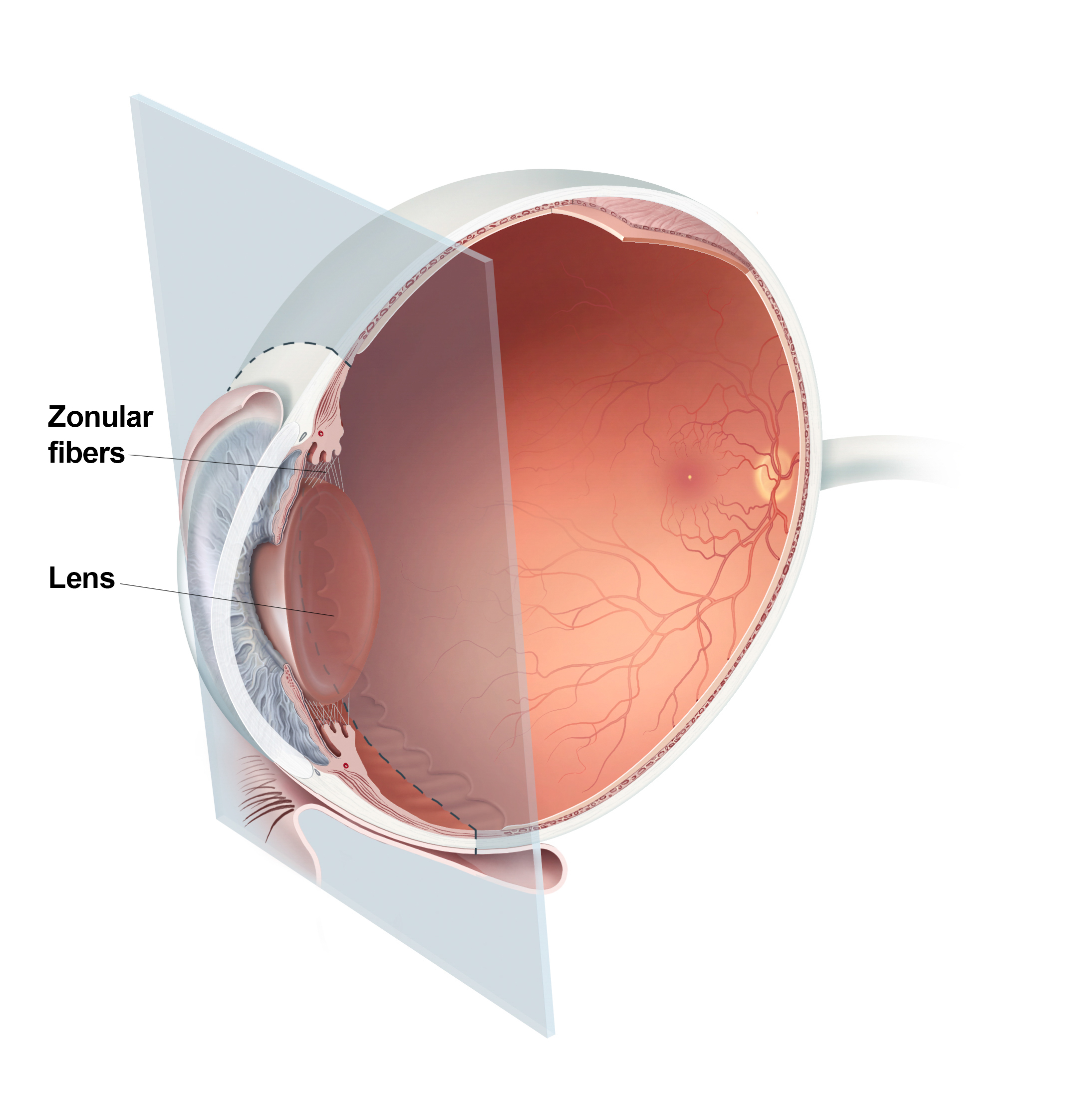People with Marfan sydrome tend to be taller and thinner than average with disproportionately long fingers and limbs. They often have abnormal curvature of the spine and weakness in major arteries. Of major concern is their high risk of aortic aneurysms. Like the zonules in the eye, elastic connective tissue throughout the body needs the proper support structure to function properly.
Steven Bassnett, Ph.D., professor of ophthalmology and visual sciences at Washington University in St. Louis, and his team explored a key structural component of zonules called fibrillin-1. Marfan syndrome has been linked to more than 3,000 fibrillin-1 mutations. In the eye, the mutations weaken the zonule fibers to the point of breaking and letting go of the lens, a condition called ectopia lentis. People with Marfan syndrome have increased risk of glaucoma, cataract, and high myopia.
“We’ve known for many years that fibrillin-1 is important for normal lens function,” said Bassnett. “However, none of the existing animal models of fibrillin-1 mutations replicate the eye symptoms that we see in people with Marfan syndrome. Our study is the first to pinpoint where in the eye fibrillin-1 is synthesized, opening the door to treatments aimed at repairing or regenerating zonule fibers.”
The team disrupted fibrillin-1 gene expression in mice selectively at either end of the zonular fibers: where they attach to the lens or where they anchor to the non-pigmented ciliary epithelium (NPCE). In the lens, fibrillin-1 disruption had no effect on zonules, but its disruption in the NPCE weakened them.
As mice aged, zonule strength decreased. Normally, zonular fibers consist of microfibrils that bundle together like rubber strands in a bungee cord. These fibers radiate from the lens like springs surrounding a trampoline. See video (video with audio descriptions).
High-resolution microscopy showed that without fibrillin-1, zonules failed to make proper bundles. By two months of age, loss of fibrillin-1 resulted in a 90-percent reduction in the strength of the zonule.
By age 3 months, all mice with fibrillin-deficient NPCE had experienced ectopia lentis. And they exhibited other Marfan-like symptoms, including cataract and abnormal enlargement of the eyeball, a condition thought to be responsible for high myopia in people with Marfan syndrome.
“These mice provide a useful model for testing new therapies for Marfan syndrome,” said Bassnett. His team’s work shows that the NPCE is the major source of fibrillin-1 in zonules and a likely target for gene therapy and other treatment approaches.
Funding for this research was provided by the National Eye Institute, Research to Prevent Blindness, and the National Marfan Foundation.
For information about Marfan syndrome, visit the National Institute of Arthritis and Musculoskeletal and Skin Diseases.
Reference:
Jones W, Rodriguez J, Bassnett S. Targeted deletion of fibrillin-1 in the mouse eye results in ectopia lentis and other ocular phenotypes associated with Marfan syndrome. Dis Model Mech. 2019 Jan 25;12(1). doi: 10.1242/dmm.037283. PubMed PMID: 30642872; PubMed Central PMCID: PMC6361150.
###
This press release describes a basic research finding. Basic research increases our understanding of human behavior and biology, which is foundational to advancing new and better ways to prevent, diagnose, and treat disease. Science is an unpredictable and incremental process— each research advance builds on past discoveries, often in unexpected ways. Most clinical advances would not be possible without the knowledge of fundamental basic research.
NEI leads the federal government’s research on the visual system and eye diseases. NEI supports basic and clinical science programs to develop sight-saving treatments and address special needs of people with vision loss. For more information, visit https://www.nei.nih.gov.
About the National Institutes of Health (NIH): NIH, the nation’s medical research agency, includes 27 Institutes and Centers and is a component of the U.S. Department of Health and Human Services. NIH is the primary federal agency conducting and supporting basic, clinical, and translational medical research, and is investigating the causes, treatments, and cures for both common and rare diseases. For more information about NIH and its programs, visit https://www.nih.gov/.
NIH…Turning Discovery Into Health®
Original post https://alertarticles.info


